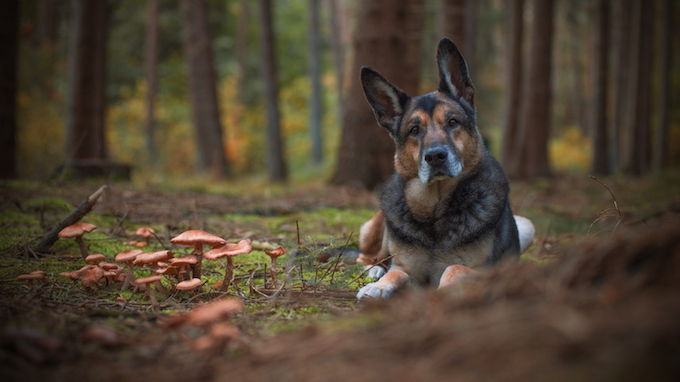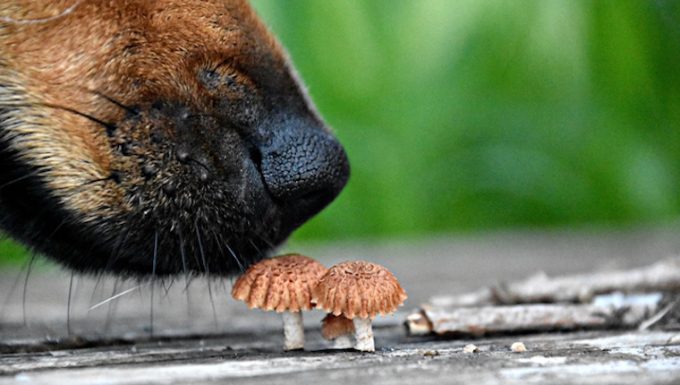Mushroom poisoning in dogs happens when a dog eats a mushroom that is toxic. There are around one hundred types of mushrooms that are poisonous to dogs.
Unfortunately, the condition can prove to be fatal. So always treat the condition as a medical emergency.
Technically, the condition is also known as mushroom toxicity.
If you see the signs of the condition in your dog, then get to a veterinarian for a proper diagnosis and treatment.
Here’s what you should know about the symptoms, causes, and treatments for the condition.
Symptoms of Mushroom Poisoning in Dogs
The condition produces a wide range of symptoms. For example, some of the most common symptoms include:
- Diarrhea
- Jaundice
- Seizure
- Vomiting
- Stomach pain
- Breathing problems
- Lethargy
- Drinking more than usual
- Peeing more than usual
- Tremors
- Drooling
Additionally, in some cases the condition can unfortunately be fatal.
Causes of Mushroom Poisoning in Dogs

The cause of the condition is a dog eating a poisonous mushroom. Technically, there are around one hundred types of mushrooms that are poisonous to dogs. For example, some of the most common poisonous mushroom species include:
- Amanita
- Lepiota
- Galerina
Generally, the condition happens most often in spring and fall. These are mushroom growing seasons.
Treatments for Mushroom Poisoning in Dogs
Firstly, your vet will ask about your dog’s symptoms. Secondly, your vet will ask about any circumstances where your dog could have ingested a mushroom. If you actually notice your dog eating a mushroom, try and bring a sample or a photograph of it to your vet.
Thirdly, your vet will carry out a full physical examination. Blood and urine tests will be taken. Although, unfortunately, the time it takes to test for signs of mushroom toxicity can take too long to be useful.
Generally, treatment will focus on removing any toxins from your dog’s body. For example, induced vomiting can help. Although never try this yourself.
Additionally, activated charcoal can be used, along with intravenous fluid therapy.
Medication can also be useful, especially to treat symptoms like diarrhea and vomiting. As always, if your vet prescribes your dog any medicine, make sure to stick to the correct dose and frequency instructions. Also, complete the full course of medicine.
Ultimately, prevention is better than cure with this condition. So always keep your dog away from any mushrooms you come across on a walk. Additionally, check your yard and remove any mushrooms you find growing there.
You can also read more about dogs and mushrooms in general here.
Have you ever cared for a dog who suffered from this condition? How did your vet help your dog recover? Let us know in the comments section below.









